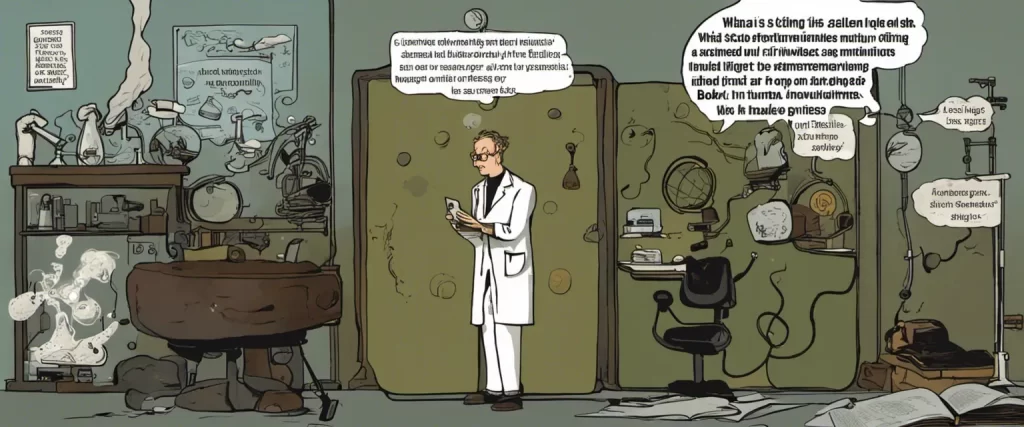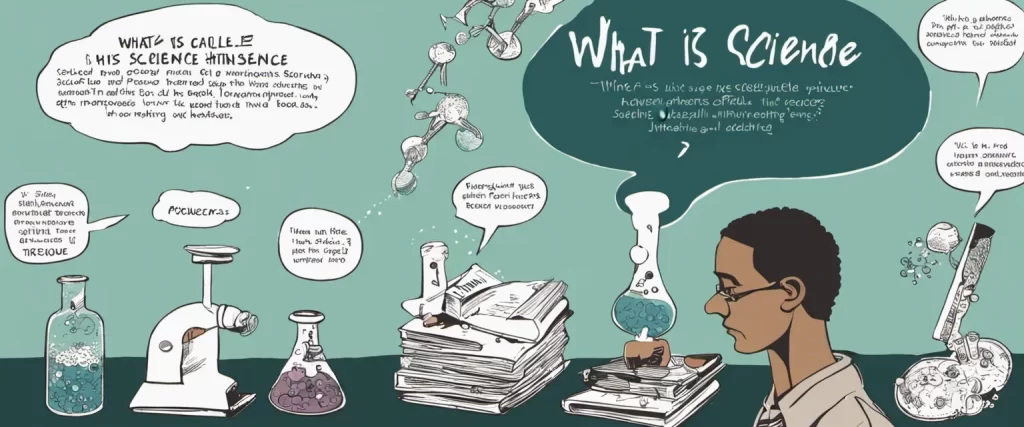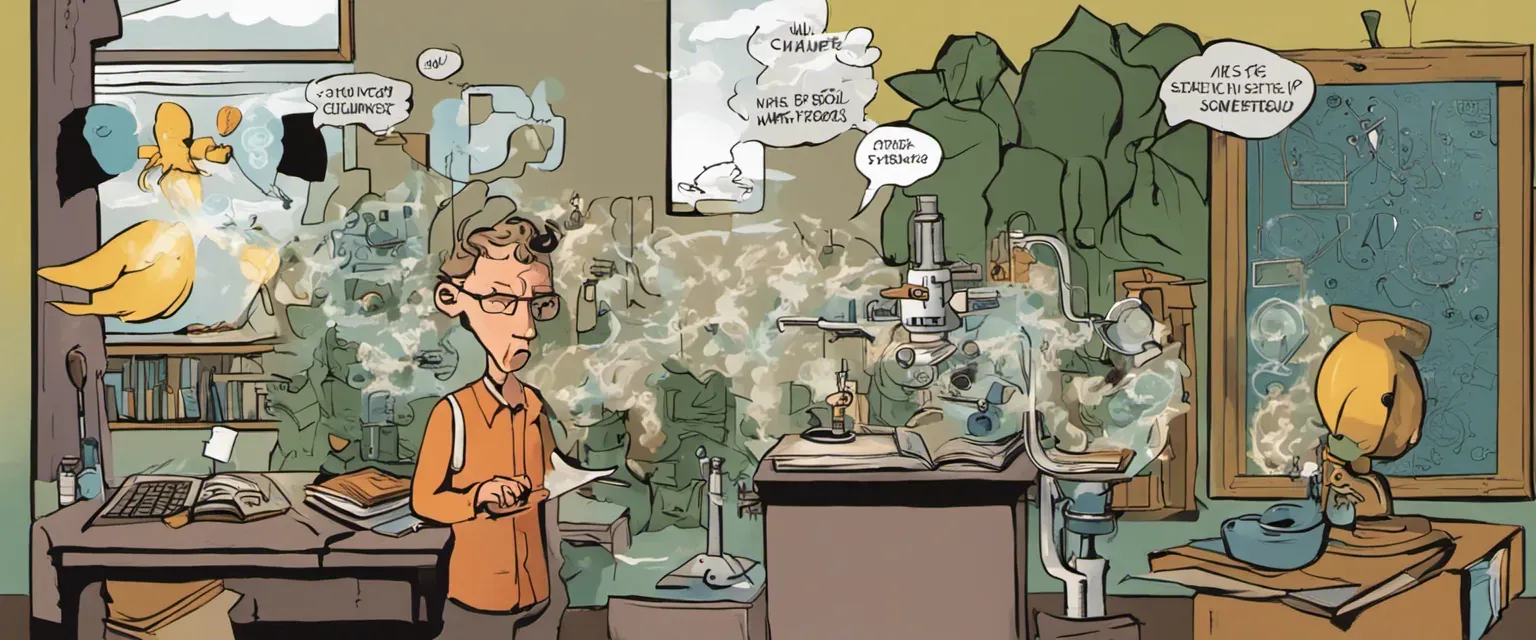——Sophie’s World by Jostein Gaarder & What Is This Thing Called Science by Alan F. Chalmers
Literature has always held the power to provoke thought, challenge established beliefs, and expand our understanding of the world around us. Two exemplary works that embody this power are Jostein Gaarder‘s “Sophie’s World” and Alan F. Chalmers’ “What Is This Thing Called Science”. While seemingly disparate in their subject matter, these books share a common aim of exploring complex ideas and concepts, albeit in different domains. Sophie’s World” delves into the realm of philosophy, taking readers on a captivating journey through the history of human thought. On the other hand, “What Is This Thing Called Science” delves into the philosophy of science, unraveling the intricate web of scientific discovery and its implications. Both books engage readers in critical thinking, challenging them to question their preconceived notions and navigate the boundaries between knowledge and understanding.
At first glance, it may appear that Gaarder’s novel and Chalmers’ treatise are vastly dissimilar in terms of style and content. “Sophie’s World” presents itself as a fictional narrative, following the journey of a young girl named Sophie as she encounters a mysterious philosopher and is introduced to the diverse philosophies that have shaped human history. In contrast, Chalmers’ work is a nonfictional exploration of the philosophy of science, investigating the nature of scientific knowledge, its methods, and the underlying assumptions that drive scientific inquiry.
While one may expect the fictional narrative aspect of “Sophie’s World” to distance it from a more academically focused work like “What Is This Thing Called Science,” the two books are unexpectedly linked by their objective to illuminate complex philosophical ideas through accessible storytelling. Gaarder skillfully weaves intricate philosophical concepts into the fabric of his fictional narrative, engaging readers of all backgrounds in a journey of intellectual discovery. Chalmers, on the other hand, presents captivating real-world examples and thought experiments to unravel the intricacies of the scientific method and epistemology.
This comparative study aims to analyze the similarities and differences between Gaarder’s “Sophie’s World” and Chalmers’ “What Is This Thing Called Science”. Through critical examination of their respective approaches, we will explore how both authors effectively convey complex philosophical ideas, challenge our understanding of the world, and foster a deeper appreciation for the power of knowledge. From the exploration of metaphysics, ethics, and existentialism in “Sophie’s World” to the analysis of induction, falsification, and the demarcation problem in “What Is This Thing Called Science,” these books offer unique perspectives on the nature of knowledge and its acquisition.
By evaluating the narrative techniques, thematic similarities, and philosophical implications of these works, this study seeks to shed light on the significance of both literature and philosophy in our quest for understanding. Through this comparative analysis, we hope to uncover the shared insights and divergent perspectives woven into the fabric of “Sophie’s World” and “What Is This Thing Called Science,” ultimately enriching our appreciation for the power of storytelling and thought-provoking discourse.
Brief Summary of Two Books
Sophie’s World by Jostein Gaarder
“Sophie’s World” by Jostein Gaarder is a philosophical novel that tells the story of Sophie Amundsen, a 14-year-old girl who starts receiving mysterious letters posing fundamental questions about life and existence. As Sophie delves deeper into these questions, she is introduced to the history of philosophy through a series of lessons given by her enigmatic mentor, Alberto Knox.
Through their philosophical journey, Sophie and Alberto explore the ideas of ancient thinkers like Socrates, Plato, and Aristotle, as well as modern philosophers such as Descartes, Kant, and Marx. They discuss various philosophies, including existentialism, utilitarianism, and postmodernism, as well as concepts like good and evil, free will, and the meaning of life.
As the story unfolds, Sophie discovers that her entire existence is fictional, created by Alberto as a way to explore and explain the world of philosophy. Sophie confronts her creator, questioning her own existence, and ultimately realizes that she has the power to shape her own life and beliefs.
As a philosophical novel, “Sophie’s World” combines a coming-of-age narrative with an exploration of the history of philosophy and its significant ideas. It not only imparts knowledge about philosophy but also challenges readers to question their own beliefs and assumptions about the world.
What Is This Thing Called Science by Alan F. Chalmers
“What Is This Thing Called Science” by Alan F. Chalmers is an introduction to the philosophy of science. The book explores various questions and issues surrounding the nature of scientific knowledge and its methodology.
Chalmers begins by discussing the demarcation problem, which concerns how to distinguish science from other forms of knowledge. He explains that science is based on a specific methodology that involves the formulation of hypotheses, testing through observation and experiment, and the use of logical reasoning. Through this process, scientists aim to produce empirical knowledge that is objective and reliable.
The author also explores the growth and development of scientific theories. He explains that theories are not simply derived from empirical data but are constructed through the use of concepts, models, and theories within a broader scientific framework. Chalmers emphasizes that theories are always subject to change and revision as new evidence or ideas emerge.
Additionally, Chalmers examines the role of observation and measurement in science. He discusses the limitations and challenges of gathering data and highlights the importance of objectivity and reproducibility in scientific experiments. The author also addresses the concept of scientific realism, arguing that scientists aim to discover truths about the world rather than merely constructing useful explanations.
Furthermore, Chalmers delves into the social dimensions of science, such as the influence of cultural and societal factors on scientific knowledge. He discusses the role of scientific communities, scientific consensus, and the impact of scientific revolutions and paradigm shifts.
Overall, “What Is This Thing Called Science” provides readers with an accessible and comprehensive overview of the philosophy of science, exploring the nature of scientific knowledge, its methodologies, and the social and historical aspects that shape scientific understanding.
Comparison between Two Books

Similarities in Cultural History
Both Sophie’s World by Jostein Gaarder and What Is This Thing Called Science by Alan F. Chalmers touch upon the topic of cultural history in their respective narratives.
1. Cultural Perspective: Both books examine the development of knowledge and the progress of ideas within specific cultural contexts. Sophie’s World explores the history of philosophy through various cultural periods, from ancient Greece to the modern era. On the other hand, What Is This Thing Called Science focuses on the emergence and evolution of scientific knowledge within different cultural and historical settings.
2. Influence of External Factors: In both books, the authors highlight how external factors, such as social, political, and religious influences, shape cultural history. Sophie’s World emphasizes how prevailing beliefs and societal structures impacted philosophical theories, while What Is This Thing Called Science emphasizes the influence of cultural biases and paradigms on scientific practices and theories.
3. Individual Contributions: Both books acknowledge the significant contributions of individual thinkers in shaping cultural history. Sophie’s World introduces various philosophers who made groundbreaking contributions, ranging from Socrates to Descartes to Kant. Similarly, What Is This Thing Called Science profiles influential scientists and philosophers like Galileo, Popper, and Kuhn, discussing their impact on the development of scientific methods and theories.
4. Evolution of Thought: Both books explore the concept of progress and change in cultural history. Sophie’s World portrays the evolution and evolution of philosophical ideas, demonstrating how knowledge builds upon previous theories. Meanwhile, What Is This Thing Called Science examines the development of scientific methodologies and theories, illustrating how scientific understanding has evolved over time.
5. Contextual Understanding: Both books emphasize the importance of understanding cultural context to fully comprehend and appreciate the significance of ideas. Sophie’s World delves into historical periods, highlighting how philosophical questions and theories arise from specific historical situations. Similarly, What Is This Thing Called Science emphasizes the necessity of considering socio-cultural factors when evaluating scientific claims and practices.
In summary, both Sophie’s World and What Is This Thing Called Science delve into the importance of cultural history in understanding the development of philosophical and scientific knowledge. They explore the influence of external factors, the role of individual thinkers, the evolution of thought, and the importance of contextual understanding in shaping cultural history.
Divergences in Cultural History
Sophie’s World by Jostein Gaarder and What Is This Thing Called Science by Alan F. Chalmers are two distinct books that cover different topics in philosophy and science, respectively. While both books delve into the realm of knowledge and inquiry, the divergence between them lies in their approach to cultural history.
Sophie’s World is a philosophical novel that explores the history of philosophy through the eyes of a young girl named Sophie. Gaarder intertwines fictional storytelling with historical accounts of various philosophers and their ideas, providing a comprehensive overview of Western philosophical thought. The book not only addresses the content of philosophical theories but also highlights the cultural and historical contexts within which these ideas emerged. It touches upon the influence of different time periods, such as the Renaissance, Enlightenment, and Romanticism, turning cultural history into an essential aspect of understanding and appreciating the philosophical concepts being discussed.
On the other hand, What Is This Thing Called Science takes a more focused approach to the philosophy of science. Chalmers aims to demystify the nature of science, its methodology, and its relationship with knowledge production. While Chalmers refers to historical examples and key figures in the development of science, his emphasis lies in presenting the logical and philosophical underpinnings of scientific practice. Unlike Sophie’s World, cultural history is not as prominent in Chalmers’ work. The book primarily revolves around the examination of scientific methodology and epistemology, leaving out detailed discussions of the cultural contexts within which scientific discoveries occurred.
In summary, Sophie’s World incorporates cultural history as an integral part of its examination of philosophy, exploring the influence of different historical periods on philosophical thought. In contrast, What Is This Thing Called Science focuses primarily on the philosophy of science itself, giving less attention to the cultural history surrounding scientific developments.

Conclusion
Both Sophie’s World by Jostein Gaarder and What Is This Thing Called Science by Alan F. Chalmers are highly regarded books in their respective genres. However, their content and intended audience differ, so it ultimately depends on your personal interests and preferences.
Sophie’s World is a novel that combines fiction with philosophy, taking readers on a philosophical journey through the history of Western thought. It explores various philosophical concepts in an engaging and accessible way, making it suitable for readers who are interested in philosophy but may not have a strong background in the subject. If you enjoy storytelling and want to understand philosophical ideas within a narrative framework, Sophie’s World may be more worthy of reading for you.
On the other hand, What Is This Thing Called Science is a non-fiction book that delves into the philosophy of science. It critically examines the nature of scientific knowledge and the scientific method, providing insights into how science works and its limitations. It is more suitable for readers who have an interest in science and want to delve deeper into its philosophical underpinnings. If you are curious about the philosophy behind scientific thinking and want to explore the nature of scientific knowledge, What Is This Thing Called Science may be more worthy of reading for you.
Ultimately, both books are highly regarded and offer unique perspectives on their respective subjects. Consider your personal interests and the type of reading experience you prefer to determine which book is more worthy of reading for you.



